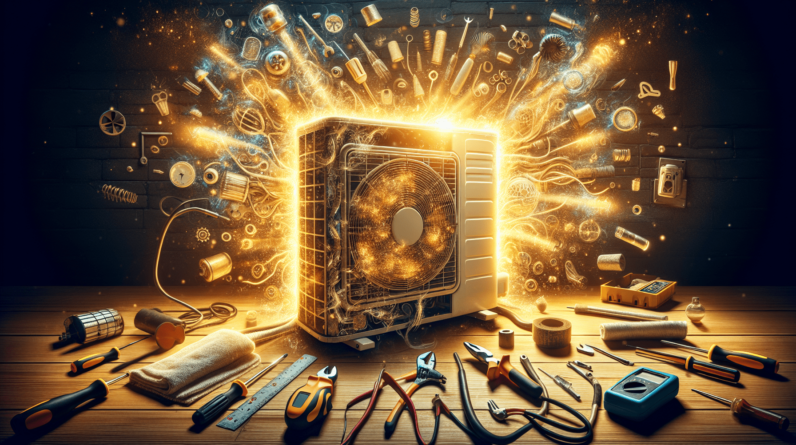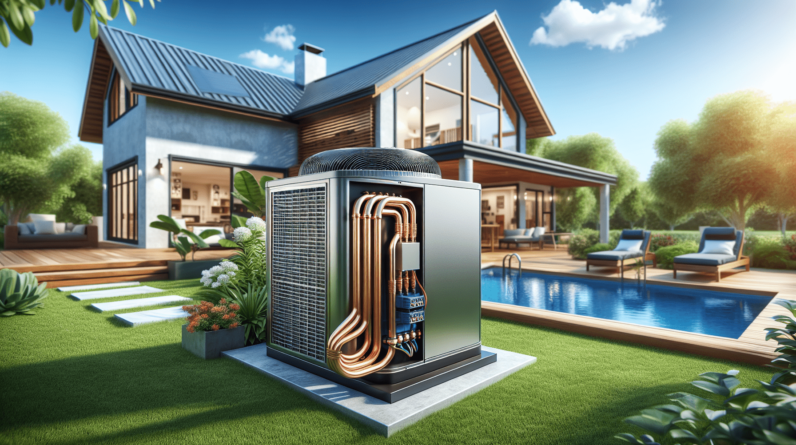
Imagine this scenario: you’re at home, going about your day, when suddenly, there’s a flicker in the lights and everything shuts off for a split second before coming back on. It may seem like a minor inconvenience, but what really happens when your house experiences a power surge? In this article, we’ll explore the potential consequences and risks that come with a sudden surge of electricity in your home. From damaged appliances to electrical fires, we’ll uncover the hidden dangers and provide you with essential knowledge to protect your home and electrical devices. So, let’s shed some light on what happens when your house has a power surge.
What Happens When Your House Has A Power Surge?
When your house experiences a power surge, it can be both frustrating and potentially dangerous. Power surges occur when there is a sudden increase in electrical voltage traveling through your home’s electrical system. This can damage your appliances, electronics, and even pose a risk of electrical fires. Understanding the causes, signs, and effects of power surges is crucial in order to protect your home and prevent future damage.
Understanding Power Surges
Causes of Power Surges
Power surges can have various causes, and it is important to be aware of them to minimize the risk. One common cause is when large appliances or equipment with high power demands, such as air conditioners or refrigerators, turn on and off. This can create voltage fluctuations that lead to power surges. Another cause can be lightning strikes, where the electrical energy is conducted through power lines and into your home. Faulty wiring, damaged power lines, and utility company switching also contribute to power surges.
Types of Power Surges
Not all power surges are created equal. There are two main types of power surges: external and internal. External power surges occur when there is a sudden increase in voltage from outside sources, such as lightning strikes or power grid issues. Internal power surges, on the other hand, occur within your home’s electrical system due to fluctuations caused by appliances cycling on and off. Both types can cause damage if not properly addressed.
Effects of Power Surges
Power surges can have a range of effects on your home and electrical devices. One of the most common signs is flickering lights, which can indicate a fluctuation in voltage. Tripping circuit breakers is another sign of a power surge, as the sudden spike in electrical current can overload the circuit. Additionally, appliances and electronics may malfunction or stop working altogether if they have been damaged by a power surge. In severe cases, power surges can even lead to electrical fires or pose safety hazards.
Signs of a Power Surge
Flickering Lights
One of the telltale signs that your house has experienced a power surge is flickering lights. If you notice your lights dimming or flickering periodically, especially when large appliances are turned on or off, it is likely that a power surge has occurred. This is a clear indication of voltage fluctuations that can be damaging to your electrical system.
Tripping Circuit Breakers
Another sign of a power surge is when your circuit breakers frequently trip. When there is a sudden increase in electrical current, the circuit breaker automatically cuts off the power to prevent damage or electrical fires. If your circuit breakers trip frequently, especially without any obvious reason such as overloading the circuit, it is a strong indication that power surges are occurring.
Electrical Appliances Malfunctioning
If your electrical appliances start malfunctioning or stop working altogether, it could be a result of a power surge. Power surges can damage the sensitive electronic components in appliances, causing them to malfunction or fail completely. If you notice unusual behavior or sudden failure of your appliances, there is a high chance that a power surge has caused the damage.
Dangers of Power Surges
Electrical Fires
One of the most significant dangers of power surges is the risk of electrical fires. When power surges occur, excessive electrical current can flow through your wiring and overload the circuits, leading to overheating and potentially causing a fire. It is crucial to address power surges promptly to minimize the risk of electrical fires and ensure the safety of your home.
Damaged Electrical Equipment
Power surges can cause extensive damage to your electrical equipment. Appliances, electronics, and other devices can have their sensitive circuitry fried by the sudden increase in voltage. This can result in expensive repairs or even the need to replace damaged equipment entirely. Protecting your valuable devices from power surges is vital to avoid these costly consequences.
Safety Hazards
Power surges also pose safety hazards for you and your family. When electrical equipment is damaged by a power surge, it can become a danger if not properly addressed. Damaged wiring or faulty appliances can lead to electrical shocks and other accidents. Taking the necessary precautions to prevent power surges is essential to maintain a safe living environment.
Protecting Your Home from Power Surges
Installing Surge Protectors
One of the most effective ways to protect your home from power surges is by installing surge protectors. Surge protectors are devices that are designed to absorb and redirect excess voltage, preventing it from reaching your electrical equipment. It is important to use high-quality surge protectors and ensure they are properly installed to provide optimal protection for your devices.
Unplugging Devices During Storms
During storms, the risk of power surges increases significantly due to potential lightning strikes or utility issues. To protect your devices from damage, it is recommended to unplug them during storms or use surge protectors with built-in disconnect switches. By disconnecting your devices from the electrical grid, you can minimize the risk of power surges and keep your equipment safe.
Having Proper Electrical Grounding
Proper electrical grounding is essential for protecting your home from power surges. Grounding provides a pathway for excess electrical current to safely dissipate into the ground, preventing it from damaging your electrical system. Ensuring that your home’s electrical system is properly grounded can significantly reduce the risk of power surges and their potential consequences.
Dealing with Power Surge Damage
Assessing the Extent of Damage
If you suspect that your home has experienced a power surge, it is important to assess the extent of the damage. Inspect your appliances and electronics for any signs of malfunction or physical damage. Look for burnt or melted components, unusual noises, or other abnormalities. Make a list of all the affected items to provide accurate information when contacting a professional electrician or your insurance provider.
Contacting a Professional Electrician
When dealing with power surge damage, it is advisable to contact a professional electrician. They have the expertise and knowledge to properly assess and repair any electrical issues caused by the power surge. A professional electrician can also offer guidance on preventing future power surges and ensuring the safety of your home.
Repairing or Replacing Damaged Appliances and Electronics
Once the extent of the damage has been assessed, you may need to repair or replace any damaged appliances and electronics. Consult with the manufacturer or a qualified technician to determine the best course of action for each item. In some cases, repairs may be possible, while in others, replacement may be necessary. It is important to consider the cost of repairs versus the value of the item and make an informed decision based on your specific circumstances.
Insurance Coverage for Power Surge Damage
Reviewing Your Homeowner’s Insurance Policy
It is crucial to review your homeowner’s insurance policy to understand the coverage for power surge damage. Some policies may provide coverage for power surge-related losses, while others may offer it as an optional add-on. Familiarize yourself with the terms and conditions of your policy to determine if you are eligible for reimbursement for any damages caused by power surges.
Filing a Claim and Documenting the Damage
If your homeowner’s insurance policy covers power surge damage, you can proceed with filing a claim. Contact your insurance provider and provide them with detailed documentation of the damage, including photographs, receipts, and any relevant information. Timely and accurate documentation is crucial to ensure a smooth claims process and increase the chances of a successful outcome.

Working with the Insurance Provider
Once you have filed a claim, work closely with your insurance provider throughout the claims process. Provide them with any requested documentation promptly and communicate any updates or changes. It is important to keep detailed records of all interactions with the insurance company and follow up regularly to ensure your claim is being processed efficiently.
Preventing Future Power Surges
Regular Electrical Inspections
To prevent future power surges, schedule regular electrical inspections by a licensed electrician. These inspections can identify any potential issues with your electrical system, such as faulty wiring or outdated equipment, that may increase the risk of power surges. By addressing these issues proactively, you can minimize the chances of power surges and protect your home and devices.
Upgrading Outdated Wiring
Outdated wiring can be a significant risk factor for power surges. Older electrical systems may not have the capacity to handle the electrical demands of modern appliances and electronics, increasing the likelihood of power surges. Consider upgrading your wiring to meet current safety standards and accommodate the electrical needs of your household. Consult with a professional electrician to determine the best course of action for your specific situation.
Education and Awareness
Educating yourself and your family about power surges and electrical safety can go a long way in preventing future incidents. Raise awareness about the potential dangers of power surges and teach everyone in your household how to use electrical devices properly. Emphasize the importance of using surge protectors, unplugging devices during storms, and recognizing the signs of power surges. By fostering a culture of awareness and caution, you can significantly reduce the risk of power surges in your home.
Do-It-Yourself Power Surge Protection
Surge Protection for Individual Devices
For additional protection, you can install surge protectors directly on individual devices. These surge protectors are designed to safeguard specific appliances or electronics from power surges. They can be particularly useful for high-value devices, such as computers or entertainment systems. Ensure that the surge protectors you choose have sufficient joule ratings to handle the potential energy of power surges.
Proper Use of Power Strips and Extension Cords
Using power strips and extension cords correctly can also provide some level of power surge protection. However, it is important to follow safety guidelines and use high-quality surge-protected power strips. Avoid overloading power strips or daisy-chaining multiple extension cords, as this can increase the risk of power surges. Regularly inspect and replace damaged cords to maintain optimal safety.
Taking Precautions During Electrical Storms
During electrical storms, it is important to take extra precautions to protect your home from power surges. Unplug all non-essential devices and appliances, and use surge protectors with built-in disconnect switches for essential devices. Keep doors and windows closed to prevent lightning from entering the house, and avoid using landline phones or other devices connected to external wiring. By being proactive and vigilant during storms, you can minimize the risk of power surges damaging your equipment.
Conclusion
Power surges can have significant consequences for your home and electrical devices, from damaged appliances to electrical fires. By understanding the causes, signs, and effects of power surges, you can take proactive steps to protect your home and prevent future damage. Installing surge protectors, staying vigilant during storms, and ensuring proper electrical grounding are all essential measures to safeguard your home. In case of power surge damage, promptly assessing the extent of the damage, contacting a professional electrician, and working with your insurance provider will help you recover and restore your home to its pre-surge condition. By prioritizing electrical safety, you can maintain a secure living environment and minimize the risk of power surge-related incidents.






